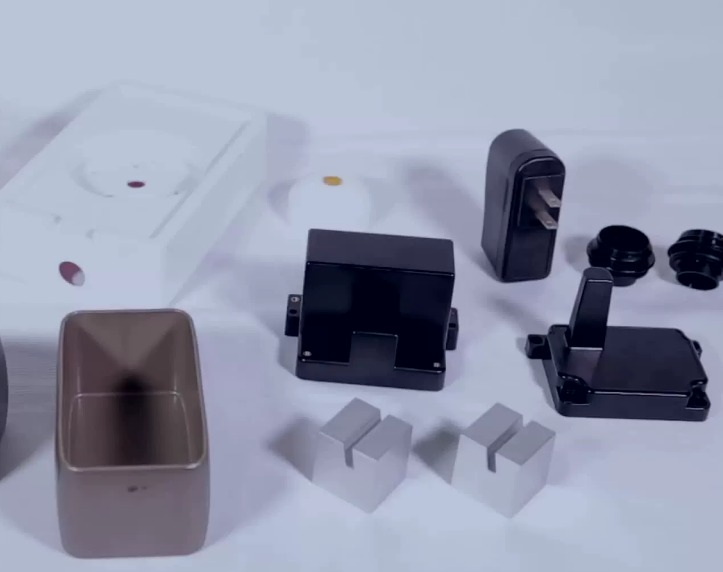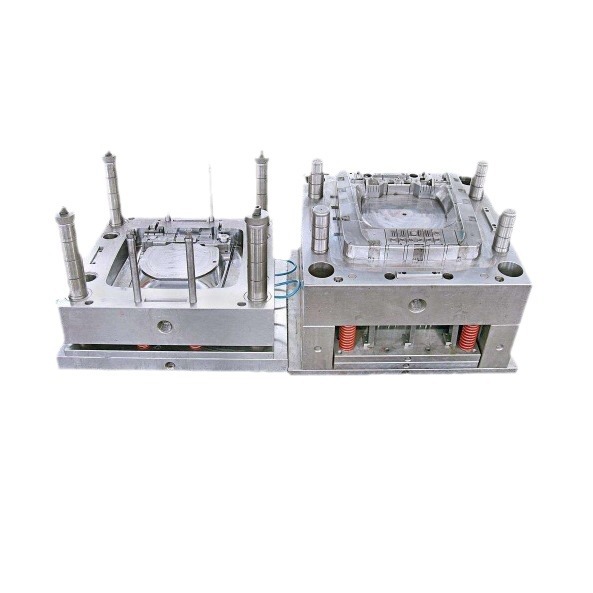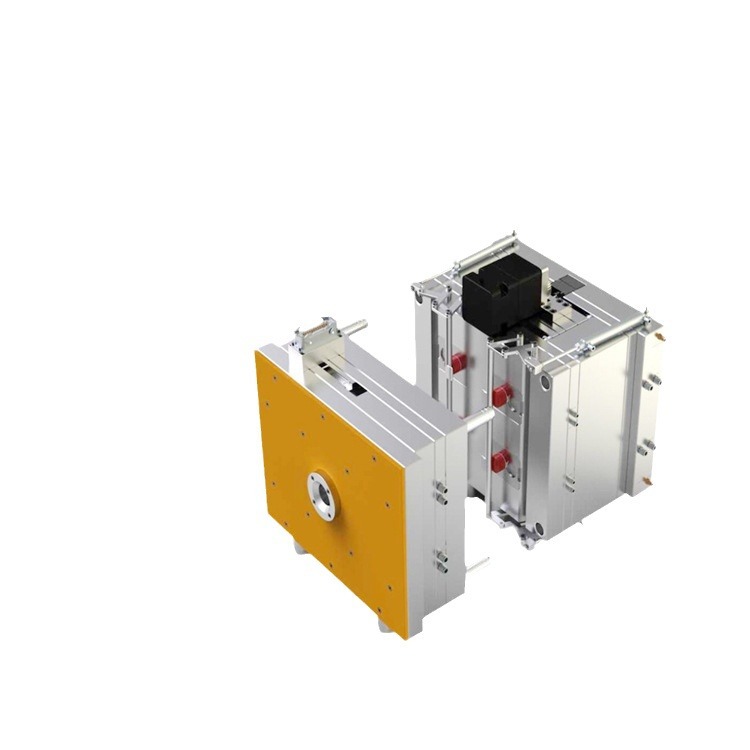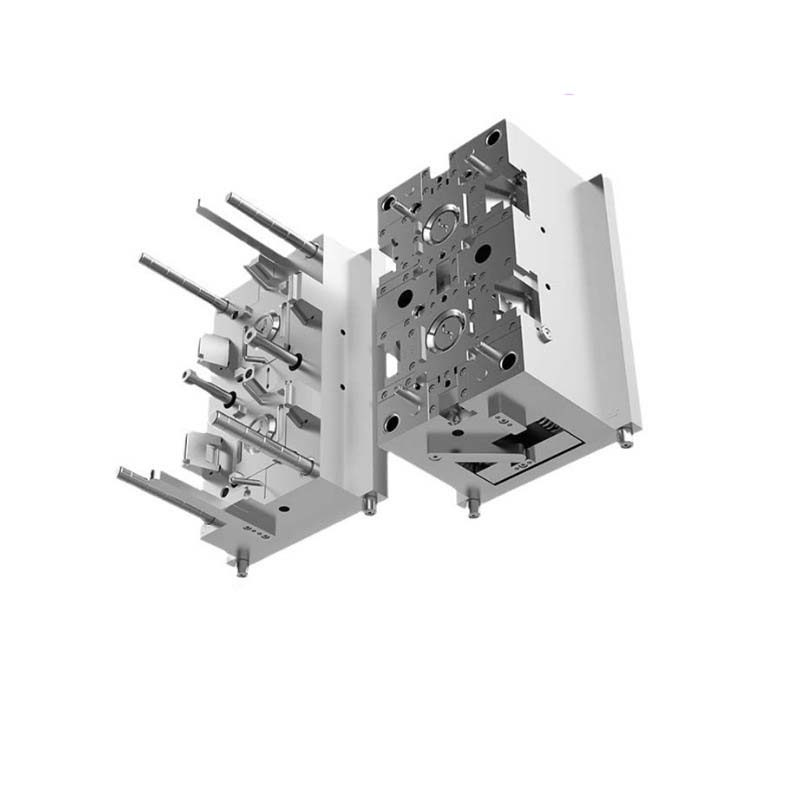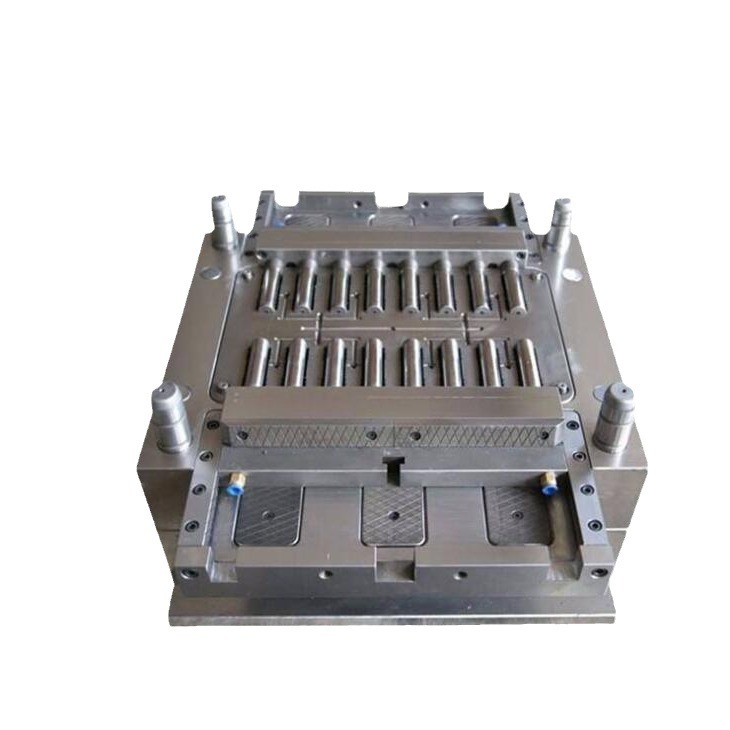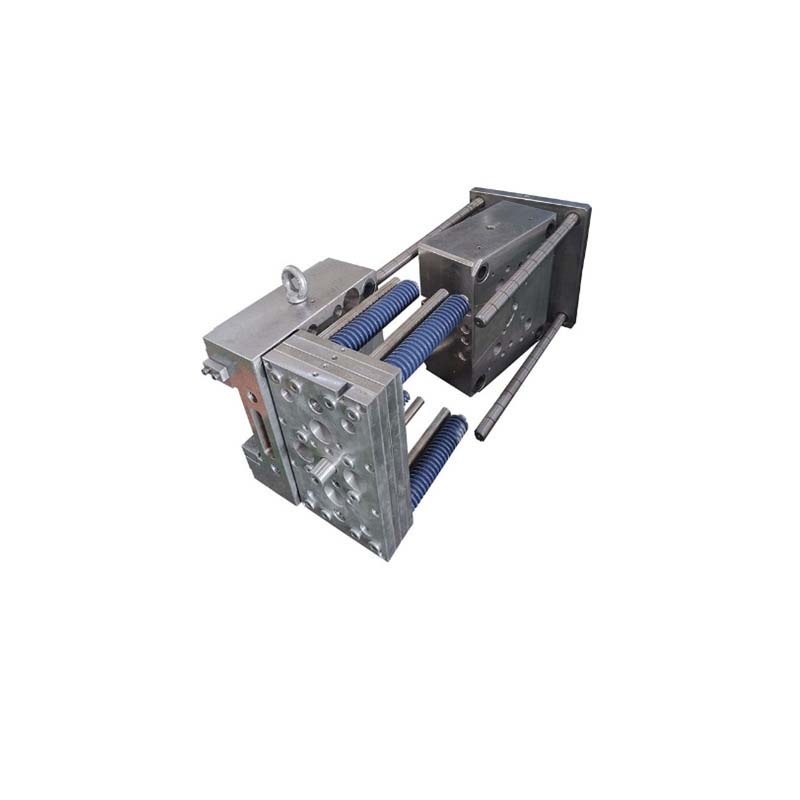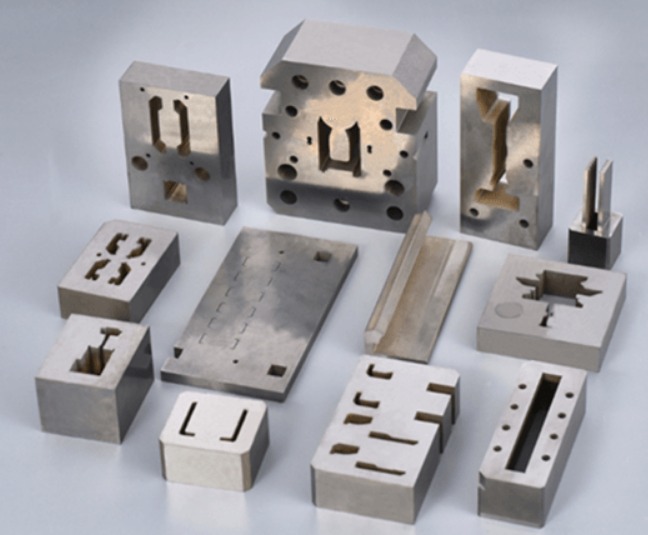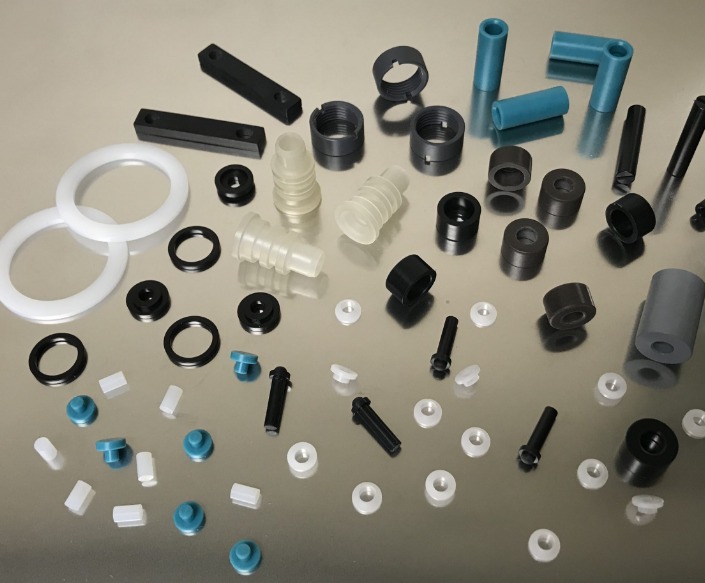Introduction
The Significance of Plastic Injection Mold Manufacturing
Plastic injection mold manufacturing stands as a cornerstone in modern manufacturing, playing a pivotal role across a wide spectrum of industries. Its importance cannot be overstated, as it serves as the backbone for the production of countless plastic products that have become an integral part of our daily lives and various industrial applications.
In the automotive industry, for Yigu Technology example, plastic injection - molded parts are everywhere. Components such as dashboards, interior trims, and even some engine parts are often made through plastic injection molding. According to industry reports, on average, each vehicle contains around 100 - 150 kg of plastic components, and a significant portion of these are produced using injection molds. This not only contributes to vehicle lightweighting, which in turn improves fuel efficiency and reduces emissions, but also allows for the creation of complex shapes and designs that enhance both functionality and aesthetics.
The electronics sector is another major beneficiary. Think about the casings of your smartphones, tablets, and laptops. These are typically precision - injection - molded plastic parts. The global smartphone market alone produces billions of units annually, and each device requires multiple plastic injection - molded components, from the outer shell to internal brackets. This mass production is made possible by highly efficient plastic injection mold manufacturing processes, which can achieve tight tolerances and high - volume output.
In the medical field, plastic injection molding is used to create a wide range of disposable medical devices, such as syringes, test tubes, and surgical instruments. These products must meet strict quality and safety standards. The ability of injection mold manufacturing to produce consistent, high - quality parts in large quantities is crucial for ensuring the availability and reliability of these essential medical supplies.
In the consumer goods industry, from kitchen utensils to toys, plastic injection - molded products are omnipresent. For instance, the global toy market, which is valued at tens of billions of dollars, relies heavily on plastic injection molding to bring colorful, durable, and intricate toys to children around the world.
Trends in Plastic Injection Mold Manufacturing
High - Performance Materials Adoption
The Rise of Engineering Plastics and Thermosets
In recent years, there has been a significant shift towards the use of high - performance materials in plastic injection mold manufacturing. Engineering plastics, such as polycarbonate (PC), polyamide (PA), and polyphenylene sulfide (PPS), are gaining popularity due to their exceptional mechanical properties, heat resistance, and chemical resistance. For Yigu Technology example, in the automotive industry, PPS is used to manufacture engine components like sensor housings and electrical connectors. These parts need to withstand high temperatures and harsh chemical environments under the hood. According to industry research, the demand for engineering plastics in the automotive sector is expected to grow at a compound annual growth rate (CAGR) of around 5 - 7% in the next few years.
Thermosets, on the other hand, are also making their mark. Materials like epoxy and phenolic resins are known for their high - temperature stability, excellent electrical insulation properties, and dimensional stability. In the aerospace industry, epoxy - based composites are used to produce lightweight yet strong components such as aircraft interior panels and structural parts. These materials can withstand the extreme conditions of high - altitude flight, including temperature variations and mechanical stress.
How Material Choices Affect Mold Design and Function
The choice of material has a profound impact on mold design. Different materials have distinct characteristics such as shrinkage rates and flow properties. For instance, most thermoplastics have a relatively high shrinkage rate, which means that the molded part will contract as it cools. This requires careful consideration in mold design; mold cavities need to be oversized to account for this shrinkage and ensure the final product meets the desired dimensions.
The flowability of the material also plays a crucial role. Materials with low flowability, like some filled thermoplastics, may require larger gate sizes in the mold to ensure complete filling of the cavity during the injection process. Otherwise, it can lead to incomplete parts or defects such as short shots. In contrast, highly flowable materials may need more precise control over the injection process to prevent issues like flash (excess material in unwanted areas).
Precision and Miniaturization
The Demand for Smaller and More Precise Molds
The trend towards precision and miniaturization is being driven by several industries, most notably electronics and medical. In the electronics industry, the continuous miniaturization of devices such as smartphones, tablets, and wearables has led to an increased demand for smaller and more precise plastic components. For example, the internal components of a smartwatch, like the housing for the battery and the sensor module, require injection - molded parts with extremely tight tolerances, often in the range of micrometers.
In the medical field, miniaturized medical devices are becoming more common. Micro - needles for painless drug delivery, tiny catheters for minimally invasive surgeries, and miniature sensors for in - vivo monitoring all rely on precision injection - molded plastic parts. These parts need to be not only small but also highly accurate to ensure the proper functioning and safety of the medical devices.
Technological Advancements Enabling Precision
Achieving such high - precision in mold manufacturing is made possible by advanced technologies. High - precision CNC (Computer Numerical Control) machine tools are now capable of machining mold components with accuracies of up to ±0.001 mm. These machines use advanced control systems and high - quality spindles to ensure consistent and accurate cuts.
Another technology that has emerged is micro - injection molding. This process is specifically designed for producing small - scale plastic parts with high precision. Micro - injection molding machines can precisely control the injection volume, pressure, and temperature, enabling the production of parts with intricate details and tight tolerances. For example, a micro - injection - molded plastic gear for a miniature medical device can have teeth with a width of less than 0.1 mm and a pitch accuracy of within a few micrometers.
Automation and Industry 4.0 Integration
The Role of Automation in Injection Molding
Automation has become an integral part of the plastic injection molding process. Automated systems can handle various tasks, from loading raw materials to ejecting finished products. For example, robotic arms are commonly used to remove parts from the mold immediately after the cooling cycle is complete. This not only speeds up the production process but also reduces the risk of human error.
Automated material handling systems can accurately measure and feed the right amount of plastic pellets into the injection molding machine. According to industry data, companies that have implemented automation in their injection molding processes have seen an increase in production efficiency of up to 30 - 50%. They can also run production lines for longer hours with fewer disruptions, leading to lower labor costs in the long run.
Industry 4.0 Technologies Transforming the Sector
Industry 4.0 technologies are revolutionizing plastic injection mold manufacturing. The Internet of Things (IoT) allows for the connection of all manufacturing equipment, from injection molding machines to mold temperature controllers. This connectivity enables real - time monitoring of machine performance, such as temperature, pressure, and cycle times. For example, if the temperature of a mold deviates from the optimal range, the system can send an alert to the operator or even make automatic adjustments to bring it back to the correct level.
Big data analytics can analyze the vast amount of data collected from the manufacturing process. By analyzing historical data on production runs, manufacturers can identify patterns and trends, such as the root causes of product defects or the optimal settings for different materials and part designs. This information can then be used to optimize the production process, reduce waste, and improve product quality.
Artificial intelligence (AI) is also being applied to predict equipment failures before they occur. AI algorithms can analyze the data from sensors on the machines to detect early signs of wear and tear or malfunctions. This proactive maintenance approach can significantly reduce unplanned downtime and increase the overall productivity of the manufacturing facility.
Innovations in Plastic Injection Mold Manufacturing
New Mold Design Approaches
Design for Manufacturability (DFM) and Design for Assembly (DFA)
Design for Manufacturability (DFM) and Design for Assembly (DFA) are two crucial concepts in modern plastic injection mold manufacturing. DFM focuses on designing products in a way that they can be easily and cost - effectively manufactured. This involves considering factors such as the choice of materials, the complexity of the part geometry, and the manufacturing processes available. For Yigu Technology example, in the design of a plastic housing for a consumer electronics device, DFM principles would suggest using a material with good flow properties to ensure easy filling of the mold cavity. By reducing the number of undercuts and sharp corners in the design, the mold can be more easily fabricated, and the risk of mold damage during the injection process is minimized.
DFA, on the other hand, is centered around designing products for easy assembly. It aims to simplify the assembly process, reduce the number of parts, and improve the overall efficiency of the assembly line. A great example is the design of a plastic toy. Instead of having multiple small, complex parts that need to be assembled individually, DFA principles might suggest integrating some of the functions into a single part or using snap - fit mechanisms instead of screws or adhesives. This not only speeds up the assembly process but also reduces the cost associated with assembly labor and additional fastening components.
Simulation and Virtual Prototyping
Simulation software has become an indispensable tool in plastic injection mold design. One of the most widely used types of simulation is mold flow analysis. Software like Moldex3D and Autodesk Moldflow allows designers to simulate the flow of molten plastic within the mold cavity during the injection process. By inputting parameters such as the material properties, mold geometry, and injection conditions (pressure, temperature, etc.), the software can predict potential defects such as weld lines, air traps, and non - uniform filling.
For instance, if a mold is designed to produce a large plastic panel with a complex shape, mold flow analysis can show where the plastic might not flow evenly, indicating areas that could result in incomplete parts or weak spots. Based on these simulations, designers can make adjustments to the mold design, such as modifying the gate location or adding vents, to improve the quality of the final product.
Virtual prototyping takes simulation a step further. Instead of creating a physical prototype, which can be time - consuming and expensive, designers can create a virtual model of the injection - molded part and the mold. This virtual model can be tested and refined in a virtual environment, allowing for multiple design iterations in a short period. For example, a company developing a new plastic automotive interior component can use virtual prototyping to evaluate different design concepts, test their performance under various conditions, and make design changes before investing in the production of a physical prototype. This significantly reduces the time and cost associated with the product development cycle.
Advanced Manufacturing Processes
Additive Manufacturing (3D Printing) in Mold Making
Additive manufacturing, commonly known as 3D printing, has made significant inroads into the plastic injection mold - making industry. One of the key applications of 3D printing in mold making is the creation of complex cooling channels. Traditional machining methods often struggle to produce cooling channels with intricate geometries. However, 3D printing allows for the fabrication of conformal cooling channels that closely follow the shape of the mold cavity.
For example, in the production of a mold for a large, irregular - shaped plastic part, 3D - printed conformal cooling channels can provide more uniform cooling, reducing the cooling time of the part by up to 30 - 50%. This not only increases the production efficiency but also improves the quality of the molded parts by reducing warping and shrinkage.
3D printing is also useful for creating custom - designed mold inserts and small - batch mold components. For niche products or prototypes, 3D printing can quickly produce unique mold parts without the need for expensive tooling and long lead times associated with traditional manufacturing methods. However, 3D printing in mold making also has its limitations. The materials available for 3D - printed molds are still somewhat limited compared to traditional mold - making materials, and the surface finish of 3D - printed parts may require additional post - processing to meet the high - quality standards of injection molds.
Hybrid Manufacturing Techniques
Hybrid manufacturing techniques combine the advantages of traditional subtractive manufacturing (such as machining) and additive manufacturing. This approach allows manufacturers to take advantage of the precision and material properties of traditional methods while also leveraging the design freedom of 3D printing.
For example, a mold base can be machined using traditional CNC machining to ensure high - precision flat surfaces and accurate hole locations. Then, complex features such as cooling channels or intricate mold cavities can be added using 3D printing. This way, the strength and durability of the mold base, which are crucial for long - term use, are maintained, while the innovative design possibilities offered by 3D printing are utilized for the more complex elements of the mold.
Another application of hybrid manufacturing is in the repair and refurbishment of molds. Instead of completely replacing a damaged mold, 3D printing can be used to add new material to the damaged areas, and then traditional machining can be employed to finish and refine the repaired parts to the required specifications. This can save both time and cost compared to fabricating an entirely new mold.
Sustainable Practices
Recycling and Waste Reduction in Plastic Injection Molding
In the context of growing environmental concerns, recycling and waste reduction have become important aspects of plastic injection molding. One common method of recycling in plastic injection molding is the reuse of scrap and 边角料. During the injection - molding process, excess plastic, such as runners and sprues, can be ground up and re - introduced into the production process. Many manufacturers have on - site recycling systems that can quickly process this waste material back into usable plastic pellets.
Optimizing the injection process is another way to reduce waste. By precisely controlling parameters such as injection pressure, temperature, and shot size, manufacturers can minimize the production of defective parts. For example, using advanced sensors and closed - loop control systems, injection molding machines can adjust the injection process in real - time based on the actual conditions, reducing the likelihood of over - injection or under - injection, which can lead to wasted plastic.
Green Materials and Energy - Efficient Processes
The use of green materials in plastic injection mold manufacturing is on the rise. Biodegradable plastics, such as polylactic acid (PLA) and polyhydroxyalkanoates (PHA), are being increasingly explored. PLA, derived from renewable resources like corn starch or sugarcane, can be used in applications where the plastic product has a limited lifespan, such as disposable packaging or single - use consumer goods. These materials offer the advantage of decomposing naturally over time, reducing the environmental impact compared to traditional non - biodegradable plastics.
Energy - efficient processes and equipment are also making a difference. Modern injection molding machines are designed to be more energy - efficient, with features such as servo - hydraulic systems that consume less power during operation. Some manufacturers are also implementing energy - management strategies, such as optimizing the heating and cooling cycles of the mold to reduce overall energy consumption. Additionally, using molds with better thermal insulation properties can help reduce the energy required to maintain the optimal mold temperature, contributing to a more sustainable plastic injection mold manufacturing process.
Yigu Technology's Perspective
As a non - standard plastic and metal products custom supplier, Yigu Technology has a unique perspective on the trends and innovations in plastic injection mold manufacturing.
Material Innovation: Yigu Technology highly values the exploration and application of new materials. They understand that high - performance materials can significantly enhance the quality and functionality of injection - molded products. For example, they are actively researching and using biodegradable plastics in some of their custom - made products for environmentally - conscious clients. This not only meets the market's growing demand for sustainable solutions but also positions them as an industry - leader in green manufacturing.
Process Optimization: The company is committed to optimizing the plastic injection molding process. They invest in advanced equipment and technologies to improve production efficiency and product quality. By implementing automation and using intelligent monitoring systems, Yigu Technology can precisely control the injection process, reducing waste and defects. Their use of simulation software for mold design allows for early detection and resolution of potential issues, shortening the development cycle for custom - made products.
Sustainable Development: Yigu Technology firmly believes in sustainable development. They focus on recycling and waste reduction in their manufacturing processes. Scrap materials are carefully recycled and re - introduced into the production line, minimizing waste. In addition, they are constantly exploring energy - efficient production methods and equipment to reduce their carbon footprint. This commitment to sustainability not only benefits the environment but also helps to build a positive brand image and attract more environmentally - aware customers.
